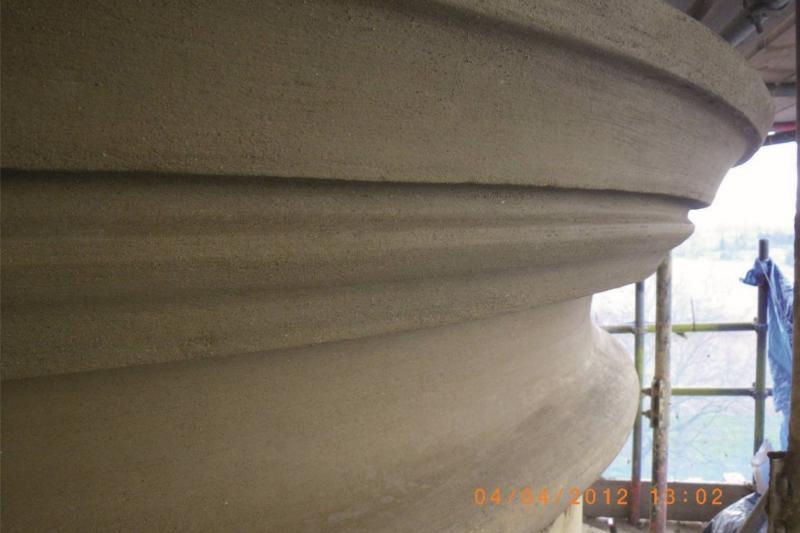Restoration & decoration
Repair of architectural details from the 19th and 20th centuries
Works
Restoring architectural moldings from the 19th and 20th centuries

In architecture, moldings refer to the set of architectural ornamentation elements that embellish a facade: sills, arches, string courses, cornices, capitals, framings, and more.
These elements, which define the building's style, are either integrated during construction or added afterwards. Moldings originally served to protect facades from water runoff and erosion, but over time, they have taken on a more aesthetic and decorative role rather than a technical one.
On 19th and 20th-century facades, moldings are abundant. It is essential to treat them with particular care to preserve the identity of these historic facades.
Solution
The PROMPT natural cement, used in concrete or mortar, allows for the durable repair of cracked decorations and structures. It also facilitates the restoration of molded decorations, statues, window and door frames, or faux stone structures, while maintaining the same characteristics as the original material. An economical and efficient solution, the PROMPT natural cement from Vicat also respects permeability and elasticity.
Technique
First and foremost, it's important to prepare the substrate and initially identify the material to be restored.
Is it natural stone? Natural cement concrete? Lime/natural cement concrete? Ordinary gray or white concrete?
Knowing the building's construction date can be helpful. In France, for instance, PROMPT natural cement gradually replaced stone from 1850 until the 1920s, after which common cements were used.
Analyzing the surface, beneath any layers of paint, can also help identify the material: hardness, porosity, and so on.
Next, it's necessary to assess the material's level of deterioration: mineral, vegetal, or pollution-related soiling, and the elements that need replacing, like fractures or cracks.
For mortar preparation, dry-mix the PROMPT natural cement with sand, TEMPO retarder (and pigment if desired) to homogenize the mixture, then add water and mix until a plastic-consistency mortar is obtained.
During implementation, apply the mortar with a trowel or float. Apply multiple "fresh on fresh" layers if necessary: the next layer is applied once the previous one has lost its workability due to absorption by the substrate but before it starts setting. Ensure the reinforcement is completely covered. Apply strong pressure, especially at the edges, for good adhesion. You can use the float as a temporary formwork or a specifically-sized mini template for the element being repaired.
Remove excess mortar from the substrate.
Fields of application

PROMPT natural cement is used for the repair and restoration of architectural moldings from the 19th and 20th centuries :
- Sills
- Arches
- String courses
- Cornices
- Capitals
- Door frames
- Window frames
- Statues
Advantages of its application
Using a mortar of PROMPT natural cement Vicat for the restoration and repair of architectural moldings from the 19th and 20th centuries allows:
- Durable repair performed with the original material
- Respect for permeability, modulus, elasticity, and the original appearance
- An economical solution
- Time savings due to thick application in a single pass
Advices
For coloration, it should be noted that the hue becomes definitive after a few days, usually ochre yellow, if the repaired element consists of successive layers in substantial thickness or if it is moistened after setting, or beige-gray, if used in thin layers: for cracks and small areas. To modify it, the following approaches can be taken: adding natural pigments (ochre yellow or red, sienna, raw umber), mixing with lime to lighten the mixture, adjusting the color of the sand (finer grains), creating a wash or a stain
Achievements
Discover our realized projects
Product
Discover everything about PROMPT natural cement
The only cement with strengths at the end of setting, it allows for the quickest return to service. In formulations, it also acts as a powerful accelerator for all hydraulic binders (lime, Portland cement, calcium sulfoaluminate cement, calcium aluminate cement).
